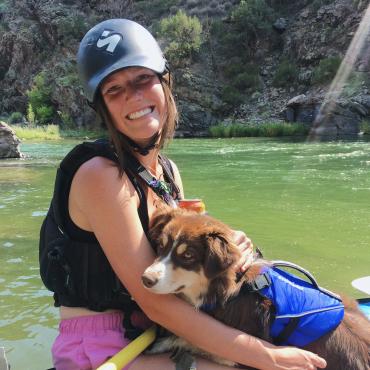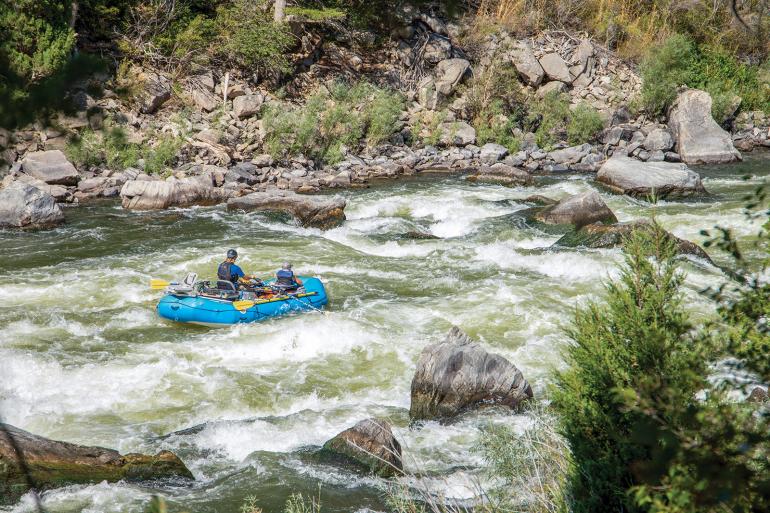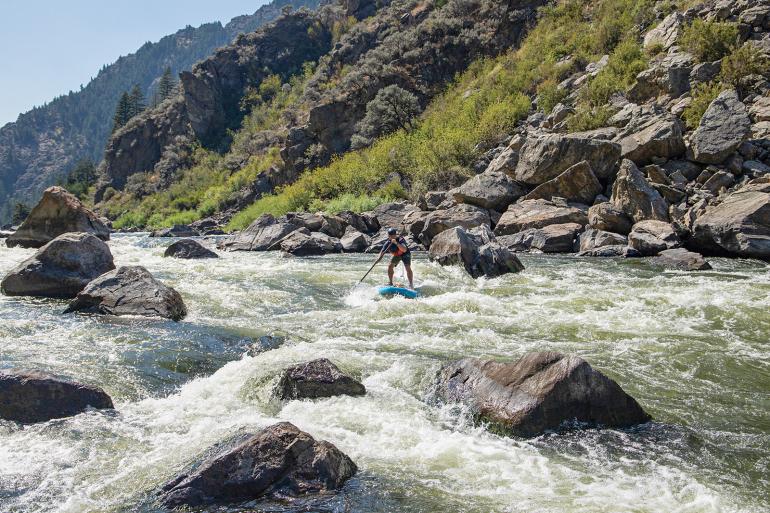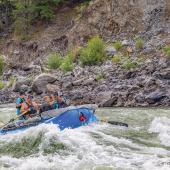Water World
The vocabulary of river anatomy.
Before I became a river rat, streams were merely a spectacle of free-flowing water pouring over rocks and forming a scenic view—but not much else. Once I put myself in a floating craft, however, the scene changed. The river became an intricate combination of water features and currents that together formed a complex and playful obstacle course.
To read a river, folks must be able to recognize certain features, understand why they are forming, and most importantly, know if the water is a friend or foe. Whether looking to start chasing whitewater or just to gain a deeper understanding of the river, here are the key hydraulic features to look for while heading downstream.
Currents
The deepest channel of a river typically flows through its center. That changes on river bends, however, where the fastest-running water is along the outside edge of a turn. Currents can also be inferred from riverbank morphology. Steep banks typically identify deep flows, and shallow banks identify low flows.
Tongues
When water flows between two obstacles, it funnels into a V shape—also called a tongue. Tongues typically show the main channel of the river, especially when leading into rapids. The current picks up speed into the point of the V.
Eddies
Eddies are located downstream of obstacles, such as boulders or obstructions in the riverbank. As fast water moves around an object, slower water fills in behind it—opposite to the main current. Eddies can appear as glossy pools, both along the banks and mid-river behind boulders. They’re especially beneficial to boaters because they can provide refuge to pull over or slow down. It’s best to enter an eddy at the top, and exit at the bottom.
Eddyline
An eddyline forms when the main river current crosses with the opposing current of an eddy. Depending on flows, these can be quite turbulent and difficult to break through, and are capable of flipping smaller boats.
Wave Train
A wave train is a group of waves traveling in the same direction. They can be playful features, best to hit dead-center with the nose of a watercraft.
Holes
When water flows fully over a boulder or ledge, a hole is formed where water is pushed back toward the obstacle. There are two types of flows that can exist in holes: laminar flows and recirculating flows. With the former, the river has enough momentum to keep all the water pushing downstream, and the hole appears as a “smiley face” from the boater’s perspective. With the latter, water curls and recirculates upstream back toward the obstruction, appearing as a “frowny face” from the boater’s perspective. Recirculating holes can be dangerous as they hold onto boats and swimmers, sometimes up to minutes on end.
Standing Wave
A standing wave forms when water flows over an obstacle that is deeply submerged. It’s created by a high volume of water being pinched between the river bottom and the surface.
Strainer
Partially submerged piles of wood—branches, trees, roots—are referred to as strainers. They function similarly to a pasta strainer: water passes through, but solid objects (such as swimmers or boats) do not.
Sieve
Sieves are similar to strainers, but are made by rocks or the riverbed. They allow water to pass, but block a person or boat.
Pillow
When water piles up on the upstream side of an obstacle, it is “pillowing.” If there is no pillow upstream of a boulder or other rock formation, it’s a sign of an undercut or possible sieve.
Rooster Tail
When fast current flows over a rock that is near the surface, it flares out in the shape of a rooster tail—a sure sign that there is a sharp rock or log within striking distance below.
Pour-Over
When a shallow flow passes over a rock in the river, it often results in a steep drop, known as a pourover. There is typically another hydraulic feature just below a pourover.
With a basic understanding of river anatomy, a tumble of whitewater suddenly becomes an intricate array of features, each with its own unique characteristics. Learning how to recognize the features—and how they function—is a critical step in every boater’s education. This overview is a good place to start, but get out on the water with knowledgeable river rats to solidify your understanding of the river this spring.















